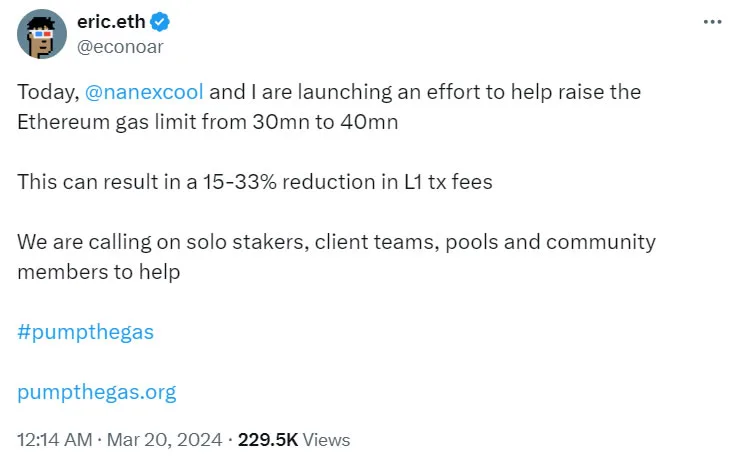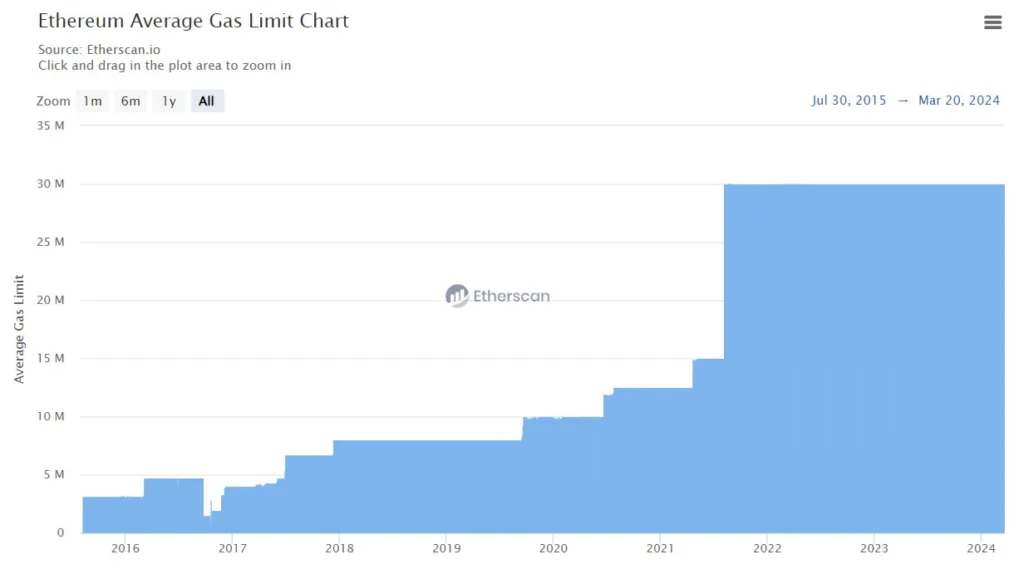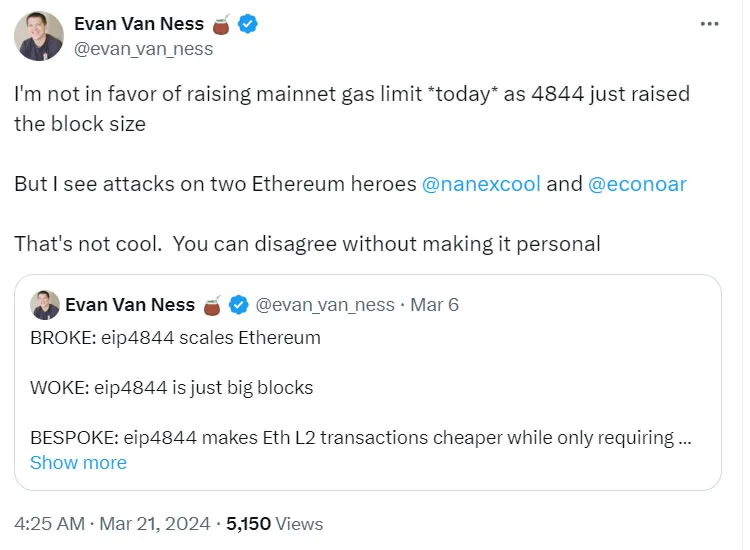Ethereum developers have initiated a new effort to increase the blockchain network’s long-standing gas limit. They argue that this adjustment could play a vital role in scaling Ethereum.
On Mar 20, two Ethereum experts, Eric Connor and Mariano Conti, launched a new website named Pump The Gas. Their goal? To bump up the Ethereum gas limit from 30 million to 40 million. They reckon this move will cut down on transaction fees on layer 1.
This could mean layer-1 transaction fees drop by 15% to 33%,” Connor mentioned in a post on X dated Mar 19. He then urged solo stakers, client teams, pools, and community members to help.
The #pumpthegas tag is getting noticed by Ethereum users, stakers, and DeFi investors on X. Plus, a Rocket Pool validator suggested a 40-million gas limit block on Mar 20, as noted by Conti.

The push to raise the Ethereum gas limit has increased in recent months. Back in January, Vitalik Buterin, one of Ethereum’s co-founders, proposed increasing the gas limit from 30 million, where it’s been since Aug 2021, to 40 million.
In response, key contributor Jesse Pollak strongly supported hiking the Ethereum gas limit to 40 million or 45 million. He emphasized that the network has the capacity and would benefit everyone involved.
The Ethereum gas limit denotes the upper gas threshold for processing transactions or smart contracts within a block. Gas represents the Ether fee essential for executing transactions or smart contracts on the network.

Ethereum Gas Limit Debate Continues
The website detailed that each operation carries a predetermined gas cost, with contracts assigned a gas limit to prevent them from surpassing during execution. This preventive measure guards against malicious contracts overburdening the network with infinite loops or excessive resource consumption.
According to the explanation, increasing the gas block limit by 33% affords Layer 1 Ethereum the capability to handle a corresponding 33% increase in transaction throughput per day.
Furthermore, it was noted that data blobs, introduced in the Dencun upgrade via Ethereum Improvement Proposal 4844, significantly alleviate layer-2 transaction fees, albeit not affecting layer-1 fees. The website suggested combining data blobs and a gas limit increase can effectively scale both Layer 1 and Layer 2 Ethereum.
But not everyone likes this change to the network. Evan Van Ness, who invests in ventures and supports Ethereum, said, ‘I don’t think we should raise the mainnet gas limit right now because EIP-4844 already made the block size bigger,’ in a message on X.

Earlier this year, Ethereum developer Marius van der Wijden worried about the proposed raise, saying it would make the blockchain bigger by adding more account balances and smart contract data.
It won’t get better, he said. Changing it will take longer and longer. And right now, there aren’t any clear fixes for the growth issue.
More bad stuff happens when we raise the gas limit. It puts more strain on the hardware and makes it easier for jerks to mess with the network.
Related Reading | Australian Regulator’s Journey Towards Outcome-Based Crypto Regulations
The author’s views are for reference only and shall not constitute any investment advice. Please ensure you fully understand and assess the products and associated risks before purchasing.




Comments (No)